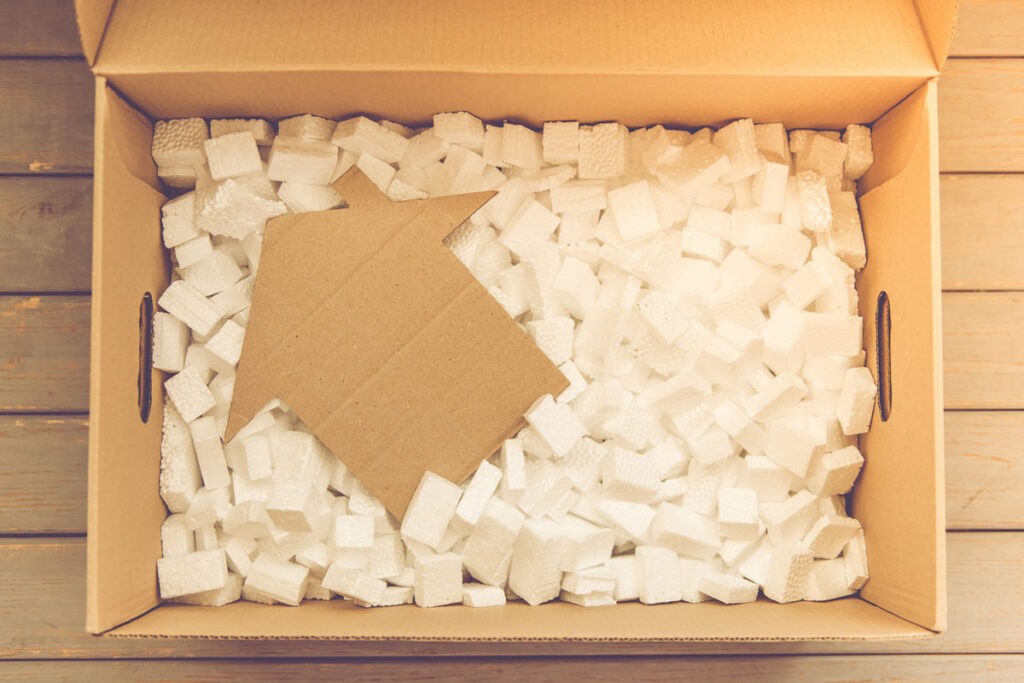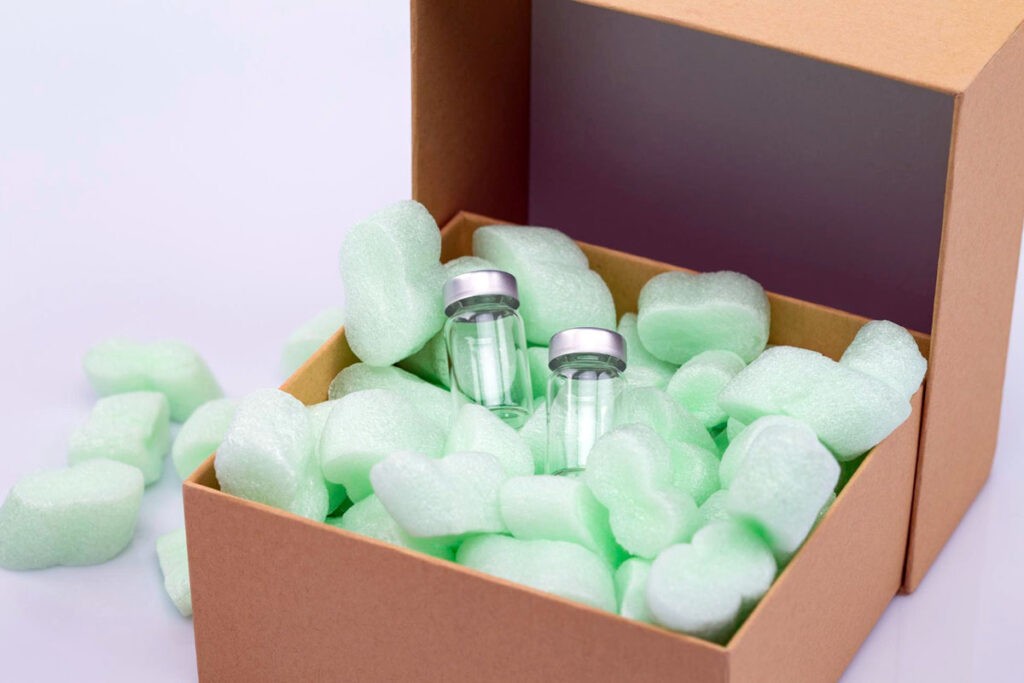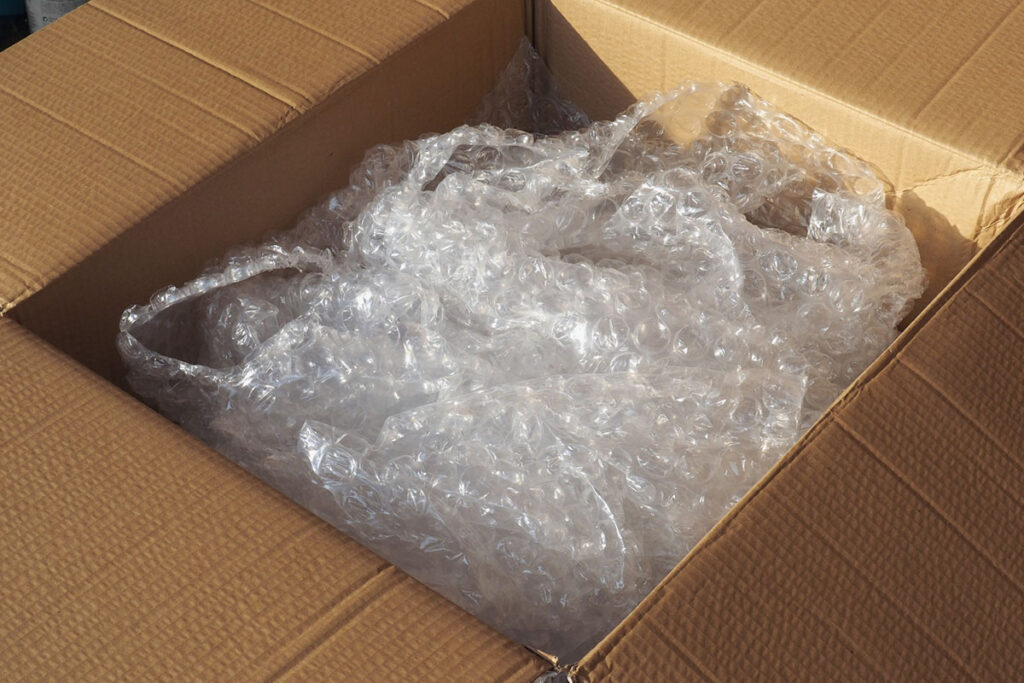Packaging is one of the most important elements used to protect products from damage during transportation and storage. In this context, packaging filling materials are a critical component of packaging that wraps the product and provides protection. Choosing the right filler is crucial to maintain the safety and integrity of the product.

What are Packaging Fillers?
packaging filling materials used to fill gaps in boxes or packaging and to ensure that products are protected against shocks and impacts during transportation. There are different types of fillers available and each has its own characteristics and advantages.
Types of Packaging Filling Materials;
- Paper Fillers: Paper is one of the most cost-effective options when considering packaging filler, as everything from newspapers to crumpled paper can provide more protection at little extra cost. Paper is also an eco-friendly, gap-fill packaging option for companies looking for sustainability. With that in mind, let’s look at some popular paper options. Wrapping paper is a thin kraft paper that can be folded over a product or crumpled to add extra cushioning inside a box. Wrapping paper is minimalist and adds elegance when used on products such as clothes or books. Wrapping paper effectively builds consumer expectations of what is underneath the packaging and is environmentally friendly for brands that want to use recycled or recyclable materials.
- Cardboard Fillers: Cardboard Fillers separate and stabilize your items in a box. They are usually made of cardboard, but light wood can also be used. Dividers are commonly used for larger boxes containing multiple samples of the same product, such as bottles, cosmetics or jars. They prevent products from bumping into each other during transportation and are perfect for larger, heavier products. Fillers don’t provide much in terms of aesthetics, but they significantly help protect fragile items.
- Wood Fillers: Besides paper and cardboard, wood fillers are another environmentally friendly void filling option. Wood fillers are a shaved, curly wood and often give consumers a pleasant scent when opening the package. Wood fillers create a more rustic and luxurious feel to a product, offering a unique unboxing experience that appeals to consumers’ sense of smell. However, be aware that the odor of wood fillers can transfer to softer items such as clothing and may not be suitable for such products.
- Bio Foam Fillers: Lightweight and flexible, ideal for fragile items. Bio foam fillers are polystyrene foam balls that are still used extensively today. Traditional bio foam fillings are seriously harmful to the environment, but a biodegradable alternative using plant-based materials has recently entered the market, albeit at a more expensive price. Bio foam pads are an excellent choice for quickly protecting fragile objects of unique shapes and sizes. However, they offer no customizability, which can be detrimental in today’s market.
- Packaging Airbags: They are another cheap, fast and non-customizable way to protect your product in transit, but there is a significant drawback to using this type of filler. While airbags are an effective way to protect a product, they are made from plastic bags filled with air, which is a significant environmental issue. Airbags come in various sizes but are generally not suitable for small products. They wrap your products tightly and protect them from impact. They are also lightweight, reducing transportation costs.
- Bubble Fillers: A commonly used filling material consisting of small air-filled plastic bubbles. They are lightweight, flexible and provide impact protection. Available in different sizes and thicknesses. Consists of disposable plastic, an environmentally friendly option.

Points to Consider When Choosing Packaging Filler
There is no right or wrong answer to this question. To determine which packaging filler is best for your product, you need to consider many factors specific to your packaging situation. These factors include your commitment to sustainability, the value you place on branding, how much protection you need and, of course, your budget.
- Product Type: When choosing a packaging filling materials, the type of product to be transported and the level of sensitivity should be taken into consideration. Filling materials that provide more protection for fragile products should be preferred.
- Weight: The weight of the filling material is an important factor as it can affect transportation costs. Transportation costs can be reduced by choosing lightweight filling materials.
- Environmental Impact: An environmentally sensitive approach can be adopted by choosing sustainable and recyclable filling materials.
- Cost: The cost of the filling material should be determined according to the budget. The most suitable option can be selected by making a price comparison between different filling materials.

Benefits of Packaging Fillers
- Improves Product Safety: Fillers help protect the product against jolts and shocks, reducing the risk of damage.
- Reduces Transportation Costs: Packaging filling materials help the packages take up less space by ensuring that the products fit tightly in the package. In this way, transportation costs can be reduced.
- Environmentally Friendly Options Available: An environmentally friendly choice can be made by choosing recycled or bio-based filling materials.
- Easy to Use: Most filling materials are easy and practical to use. In this way, time and labor can be saved.

Conclusion
Packaging filling materials are critical to maintain the safety and integrity of products during transportation and storage. There are different types of fillers available and each has its own unique characteristics and advantages.
Now you know more about the importance and types of packaging fillers. By using packaging fillers in the right way, you can increase the success of your business, which is key to protecting your products and ensuring customer satisfaction.
If you need more information about packaging fillers, do not hesitate to contact us. As Artaş Pack, we will be pleased to offer you the most suitable packaging solutions.
Phone : +90 (533) 580 23 38
E-mail : sales@artaspack.com

